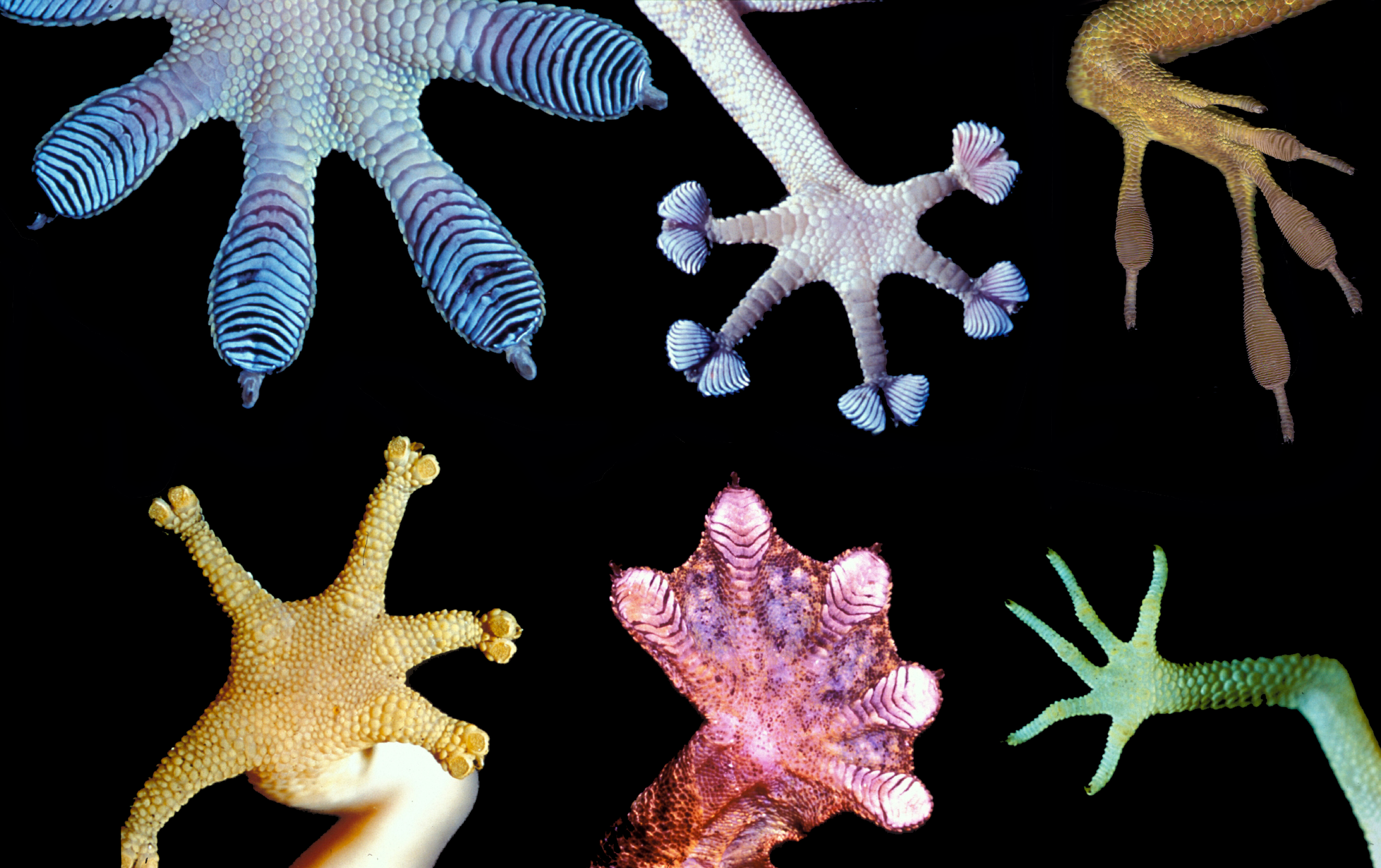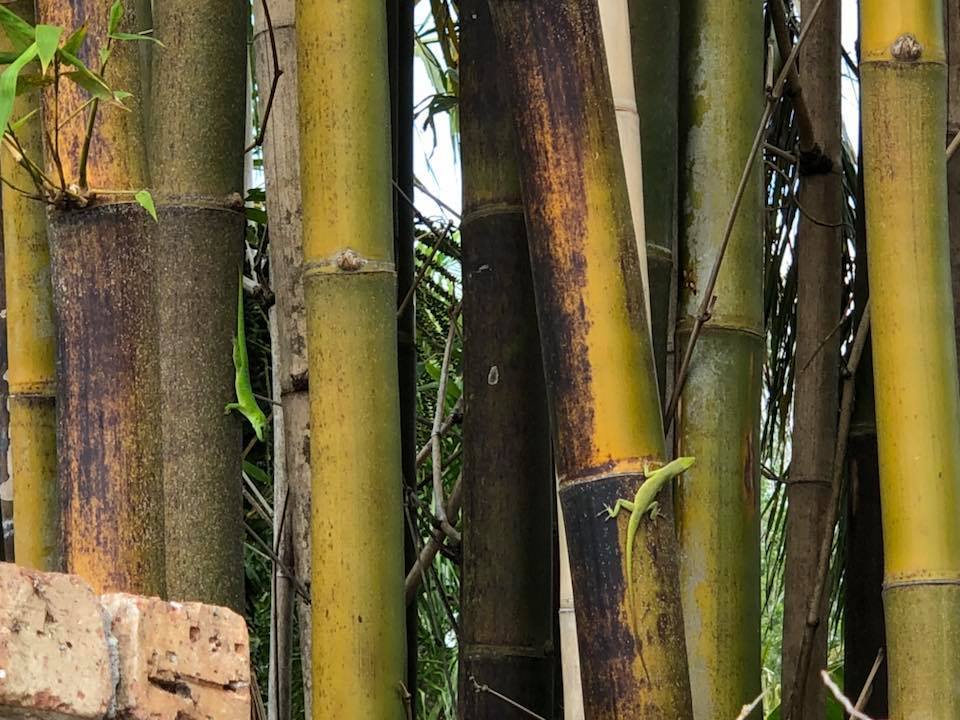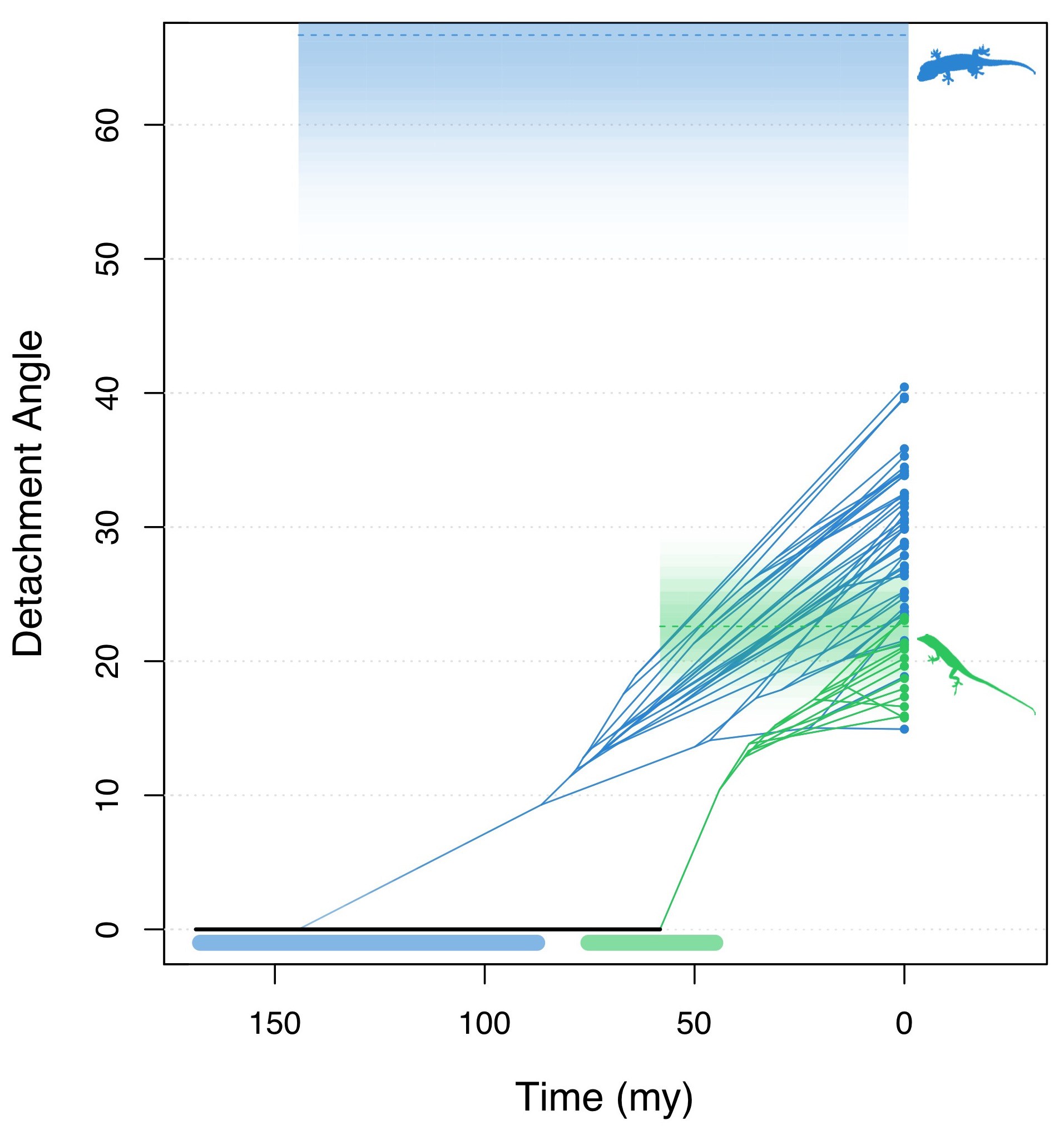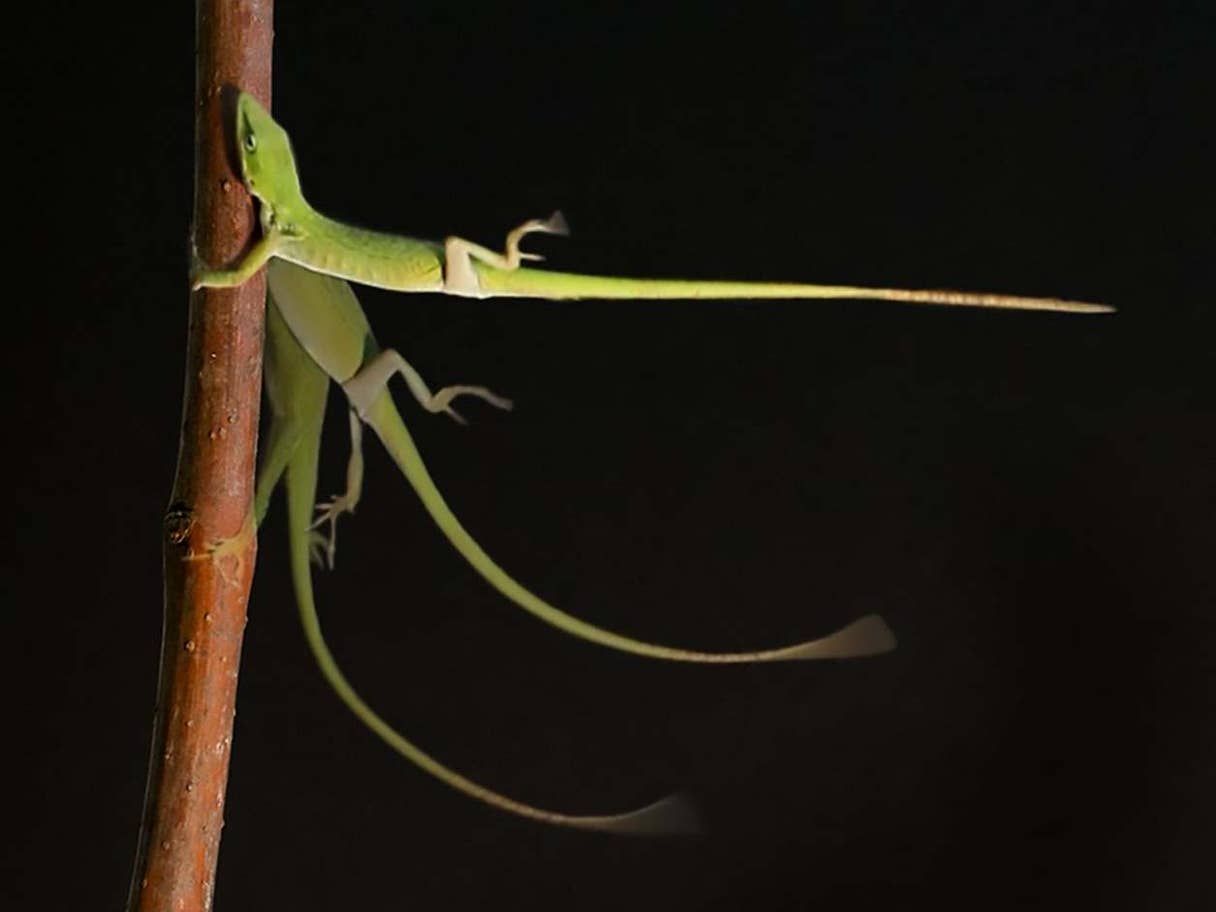
Credit: National Science Foundation
Earlier, you heard how geckos have a sticky superpower. Microscopic hairs on their toes generate electromagnetic attraction to the surfaces they walk on, letting them run up glass and across ceilings.
Anoles—common garden lizards in the southern U.S.—have less stick. They can dash up trees but can’t cling to the underside of things.
Their electromagnetic attraction evolved separately from geckos’. In fact, they diverged on their family tree more than 200 million years ago, before either developed this capability.
And both are still evolving.
Evolution happens when individuals with certain characteristics can outcompete others in their species—for food, territory, or mates—allowing them to pass on those advantageous qualities.
Recently, in the Caribbean, island anoles with larger toe pads gained an advantage when hurricanes literally blew away their competition: anoles with small toe pads and less staying power.
The larger-toe-pad anoles held fast and lived to breed another day. And within just a few years, the entire population had evolved to have bigger, stickier feet.
A few islands over, anoles in Puerto Rico also developed larger toe pads in response to urbanization. Their man-made climbing surfaces are slipperier than in the jungle, and the stickier anoles could better survive, thrive, and breed.
Perhaps it’s this remarkable adaptability that has allowed anoles to stick around so long.
Background

Credit: Jonathan Losos
Synopsis: Like geckos, anoles and some skinks have developed the ability to dash straight up vertical surfaces. How did lizards evolve the capability to cling to surfaces? How quickly can they further evolve when their environments change?
- Geckos and anoles are both small lizards in the order Squamata, which includes all scaled reptiles: lizards, snakes, and even extinct swimming mosasaurs!
- Gecko and anole lizards have similar climbing abilities and may look very similar, but they are not closely related.
- Anole toe pads work in a similar way to gecko toe pads (which we discussed in the previous EarthDate episode), but they’re not as sophisticated.
- The setae on anole toes are not as long as geckos’ and are not branched either. Anoles also can’t curl (hyperextend) their toes like geckos.
- As a result, anole toe pads can’t produce as much sticking force as gecko toe pads. Anoles’ pads work well for climbing vertical surfaces like tree trunks, but are not strong enough to let anoles run along the underside of surfaces like geckos can.

Credit: Travis Hagey
- Evolutionary analysis indicates that the ancestors of geckos and anoles diverged from each other about 200 million years ago.
- Geckos have their own infraorder, called Gekkota, with almost 2000 species worldwide. They have been around since dinosaurs roamed during the Mesozoic Era.
- At first, scientists assumed that sticky toes evolved only once, early in the history of geckos. But recent research on the large variability of gecko toe pads suggests that these adhesive organs likely evolved multiple times and independently in different groups of geckos.
- Adhesive toe pads also evolved independently in anole lizards and in a few species of skink lizards from Papua New Guinea.
- Anoles are members of the suborder Iguania, family Dactyloidae, genus Anolis, with over 400 species native to the Americas, living mostly in tropical forests. These lizards are Cenozoic creatures that have been around for the past ~50 million years.
- All anole species have similar toe pads except one—Anolis onca—so these lizards appear to have evolved toe pads via a simpler path early in their history than geckos. Anolis onca once had toe pads but lost them through evolution.
- Scientists have been able to map the evolutionary path of grip strength for both geckos and anoles over geological time frames.
- The stickiness of a species of gecko or anole can be measured and compared using a ratio of the amount of adhesion possible for a given amount of friction. This is measured by “detachment angle”—the angle at which a single toe pad loses its grip on a rotating surface. This angle can also be calculated from shear and normal forces of the toe pads. Larger detachment angle values indicate a better ability to grip surfaces.
- Geckos have evolved stronger clinging ability through a larger variety of evolutionary paths, living in a wider variety of environments than anoles, and they likely developed the ability a hundred million years before anoles did.

Credit: Colin Donihue (Washington University in St. Louis)
- Toe pads of both geckos and anoles are still evolving. Recently, researchers discovered an amazing story of rapid evolution in regions where hurricanes are frequent.
- Hurricanes destroy animal populations as they rip through ecosystems, but in areas of the Caribbean ravaged by Hurricanes Irma and Maria in 2017, researchers noticed that populations of anole species that survived have shown a measurable increase in toe pad size in the few years since the storms.
- This finding suggests that after the storms, anoles with smaller toe pads must not have participated in mating on these islands, since the bigger toe pads were preferentially passed on to the next generations. Researchers hypothesized that the lizards with smaller toe pads may have perished in the storms.
- But could anoles really withstand hurricane-force winds? The scientists tested their hypothesis in a lab by using a leaf blower on an island anole with larger pads. First, the anole moved away from the windy side, then it lost adhesion of its hind feet, but managed to hang on with its front feet.
- Anoles that had larger toe pads were found to hold on through the wind better. Because these lizards have a better chance of surviving storms in the wild, they also have a better chance of passing those larger pads on to the next generation, driving a change in the physiology of future island anoles.
- Looking back over 70 years of hurricane history, researchers have found a trend of increasing toe pad size for island anole populations where hurricanes were more frequent—this was true for nearly 200 species of anole.
- In another case, researchers found that certain anoles in Puerto Rico (Anolis cristatellus) have evolved larger toe pads as they have moved into urban areas, possibly because the surfaces they need to stick to are smoother than those in nearby jungles. Here the anoles have evolved rapidly to expand into a new niche alongside humans.

